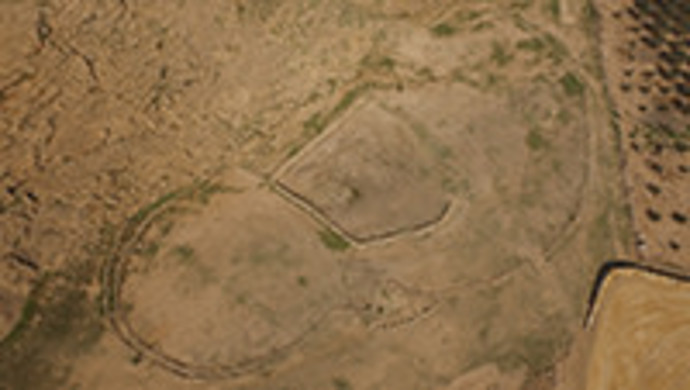The two Holy Temples in Jerusalem stood for more than 800 years combined. But where did the Israelites worship God and receive prophecy before Solomon’s Temple was built?
A new online course, hosted by Aaron Lipkin of Lipkin Tours, will be examining that very question.
Five Christian and Jewish Bible and archaeology scholars will each present one of the sites that the Bible tells us was a place where the ancient Israelites encountered God.

The course, created especially for English-speaking Evangelical Christians, addresses the question of where God’s presence was found before Jerusalem became the center of worship and prophecy in the time of King Solomon.
Five sites combine ancient Israelite worship, prophetic revelation, archeology
Lipkin identified five sites (Gilgal, Joshua’s Altar on Mount Ebal, Shiloh, Bethel and Dan) that bring together ancient Israelite worship, prophetic revelation and archeology. Each of these sites were places where the ancient Israelites connected to God or where God approached the Biblical prophets. According to Lipkin, they are “places of the Divine and reality meeting together.”
“Studying these sites in depth is intended to bring the student to a deeper level of understanding the Hebrew Bible,” Lipkin said.
“When I lecture in churches in the US, what I’m conveying is reality,” he explained. “The Biblical stories are not just legends and fairy tales. They are real stories that happened in real places.”
According to Lipkin, each of the sites conveys its own messages - messages that the faculty will share. For example, he asserted that Joshua’s Altar on Mount Ebal is about freedom of choice.

How so?
When Moses brought the Israelites the Torah on Mount Sinai, he did so with a commanding presence. By contrast, at Joshua’s Altar on Mount Ebal, the Israelites received the Torah of their own free will, as opposed to being compelled at Mount Sinai by the intensity of the experience.
Lipkin commented on this central message of Joshua’s Altar.
“You need to remember that God is giving you the choice - to choose between good and evil,” Lipkin explained.
He also hinted at why the placement of Joshua’s Altar on Mount Ebal, as opposed to Mount Gerizim, highlights that another message found on Mount Ebal is about repentance.
At Shiloh, where God first called the prophet Samuel, Lipkin said that a critical message is that we, “are lacking a healthy connection with God without prophecy.” At Bethel, where God promises Jacob that He will be with him, guard him and bring him back to Israel, we are reminded, said Lipkin, that the same promises apply to Jacob’s descendants.
The lectures will combine archeological explorations of the five sites with messages intended to spiritually enrich the students. The faculty, the majority of whom are religious Christians, are “coming as archeologists to speak about the archeological findings and discoveries in those sites and also give their insights about what the archeological findings mean.”
Lipkin said that major emphasis will be on validating that “the stories in the Bible happened. We believe these sites match what is described in the Hebrew scriptures.”
Studying about these sites in depth helps students connect to the site itself and “not only connects you strongly to the story, [but also] sheds deeper understanding of the Biblical text,” he added.
None of these sites are in Jerusalem. This was very deliberate. Jerusalem, he said, exceeds all other places in Israel in holiness, and it is a complicated city.
Lipkin spoke about how, in his opinion, “it can be hard to connect in Jerusalem in a pure way. It's easier to elevate spiritually [at these five sites] without all the intensity of Jerusalem.”
Each of the five sites are found in Samaria and all have deep Biblical significance. Lipkin shared that, “many [tourists] are fearful of visiting Judea and Samaria because of the politics, but they should know that this is where everything happened. When someone comes to Israel and wants to visit the Biblical sites and doesn’t come to Judea and Samaria, they are missing many of the most important Biblical sites.”
“Finding the Nexus: Where Did Ancient Israelites Encounter God?” runs March 6 through April 3, 2022. After each live session, students will receive links to view the presentation as well as supplemental information, such as additional Bible teachings. For more information and to register, click here.
